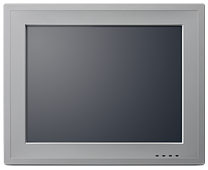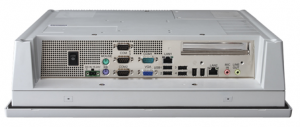In a recent post, we touched on the cost, footprint and operational efficiencies of Advantech’s 17-inch PPC-179T panel PC, noting that it offers the distinct advantages of:
- A broad range of mounting options;
- Footprint efficiency;
- Inherent durability;
- Overall cost effectiveness; and
- Accommodation of an intuitive touch-input interface.
 As impressive as are the efficiency and durability aspects of that popular Advantech panel-PC platform, the addition of Advantech’s new dual-core Atom NEMA-4 panel PCs ups the efficiency and durability ante as never before. Because energy efficiency and power consumption have become such dominant concerns of modern industry, Intel’s uber-efficienct Atom processors are finding ever-widening application, in large part because they deliver that efficiency while maintaining impressive performance characteristics, as well.
As impressive as are the efficiency and durability aspects of that popular Advantech panel-PC platform, the addition of Advantech’s new dual-core Atom NEMA-4 panel PCs ups the efficiency and durability ante as never before. Because energy efficiency and power consumption have become such dominant concerns of modern industry, Intel’s uber-efficienct Atom processors are finding ever-widening application, in large part because they deliver that efficiency while maintaining impressive performance characteristics, as well.
For example, the PPC-L158T’s Atom D525 dual-core processor offers the same 13-watt thermal design power of the Atom D510 processor, but at a 1.8 GHz clock speed instead of 1.66 GHz. Compare that to the 2.16 GHz Core 2 Duo’s 34 watt TDP for meaningful perspective on just how efficient that dual-core Atom D510 processor really is. The D525 also supports up to 4 GB of fast, energy-efficient DDR3 memory.
Because it is fan-less, the enclosure of the new Atom-equipped 15-inch PPC-L158T is even more compact, delivering low-noise performance under a wide temperature and humidity range, as well as an IP65-compliant front panel. There’s even support for an internal 2.5-inch SATA HDD, dual Gigabit Ethernet connectors, four USB 2.0 ports, two RS232 serial ports and an additional port that supports RS2323/422/485 connections. Advantech has even added a VGA port for control of a second screen for applications that require dual displays.
 The PPC-L158T’s 15-inch touch-screen display features wide viewing angles – 160-degrees horizontal and 140-degrees vertical – and its 350-nit luminance promotes easy viewing, even under bright ambient light conditions. The system incorporates a PenMount 6000 Controller Chipset, and its PenMount Control Panel utility facilitates user-defined edge compensation to prevent bezel interference with touch functionality. The PenMount Control Panel utility also allows the user to custom configure such critical functions as touch mode – whether mouse emulation or simple touch – auditory feedback, and even multiple monitor configuration.
The PPC-L158T’s 15-inch touch-screen display features wide viewing angles – 160-degrees horizontal and 140-degrees vertical – and its 350-nit luminance promotes easy viewing, even under bright ambient light conditions. The system incorporates a PenMount 6000 Controller Chipset, and its PenMount Control Panel utility facilitates user-defined edge compensation to prevent bezel interference with touch functionality. The PenMount Control Panel utility also allows the user to custom configure such critical functions as touch mode – whether mouse emulation or simple touch – auditory feedback, and even multiple monitor configuration.
Although most applications call for the PPC-L158T‘s standard resistive touch display, it is also available with capacitive and even surface acoustic wave interfaces.
Advantech’s PPC-L159T is just one example of the new dual-core Atom NEMA-4 panel PCs that it is delivering to industrial applications worldwide.













